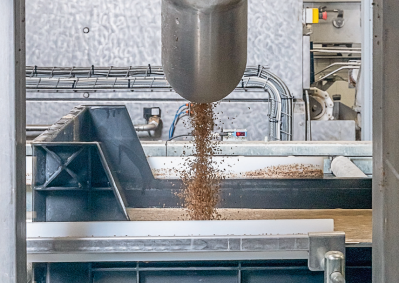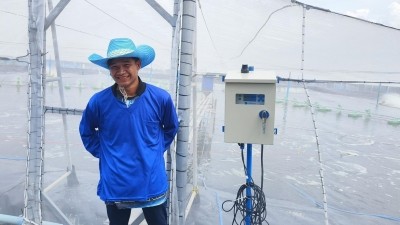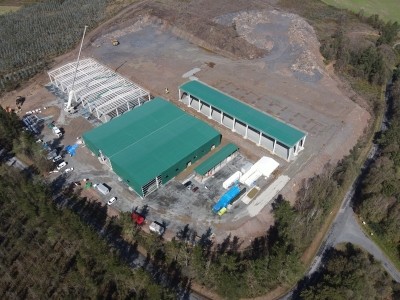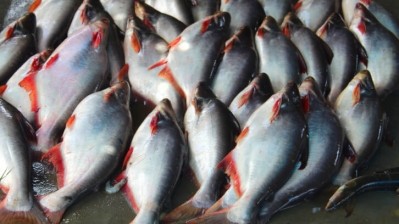Insect protein trends: Segmented supply chains, gene editing and the quest for affordable feedstock

Change is underway in the insect protein industry, as the supply chain evolves into a model based on specialization and collaboration, according to Dr Yuval Gilad, CEO and co-founder at Israeli agritech firm FreezeM.
“First generation insect protein companies were vertically integrated for the entire supply chain, doing everything from breeding to waste management, rearing and processing. Now we are seeing the industry becoming more similar to established agricultural or animal protein industries where supply chains are made up of specialists in different fields, as each link of the chain requires unique expertise and knowledge,” he told FeedNavigator.
The reason for this shift is that companies are recognizing this approach is not scalable, he said.
“It is too expensive and too complex to build large scale insect factories where one company does everything. It may have been feasible when costs were lower and funding was more easily accessible a few years ago but in the current climate, if the industry is to scale up production, and become profitable, it needs to become efficient and create value - fast.”
Collaboration and openness key
And that, Dr Gilad explained, involves companies focusing on their unique strengths and collaborating with others in the supply chain.
“The first generation of companies used to keep everything secret - they wouldn’t even share the size of the trays they were using to grow the larvae. Now, companies are sharing, they are collaborating, they are inviting others to visit their facilities and take on the challenges together.”
This is a trend that works in FreezeM’s favor, as its value proposition to the supply chain is the breeding step - providing ready-to-use BSF (black soldier fly) eggs or neonates to rearing facilities worldwide.
One example of this approach in action is FreezeM’s collaboration with Israeli waste management company Shachar group, which recycles waste from supermarkets and food factories in Israel and uses it to rear insects from larvae supplied by FreezeM.
“This is a good example of a decentralized model and once proven on a large scale it can be replicated with other waste management companies who can then enter the field very fast,” said Dr Gilad.
Insect protein enables reduced ‘paw’ print
With over 50 brands globally using insects (mainly BSF) in kibble, pet food is a big success story for insect protein - mainly because manufacturers (and consumers) recognize its value, according to Dr Gilad.
“It is hard to convince people that they should be eating insect protein but very easy to convince them to give it to their dogs and to pay more for it because it is healthy, non-allergenic and anti-inflammatory and has a low carbon footprint,” he said.
Pet food manufacturers’ willingness to pay a premium for insect protein has, to a large extent, been the making of this market.
The current price of insect meal is between €3,500 and €5,000 (US$5,467) per metric ton, with the vast majority of production going into pet food, said Dr Gilad.
Price a deal breaker for aquafeed
He added that this price point is not acceptable to aquafeed producers, who need it to come down to €2,500 before they can consider using it in formulations.
“Aquafeed producers know they need to replace fishmeal in formulations as it is not sustainable, but the price of insect meal needs to be lower, and the insect industry needs to commit to producing higher volumes,” he said.
This will only happen when more capacity comes on-stream, which Dr Gilad is confident will materialize. However, as he explained: “At the moment, demand is huge - it is higher than production, and as long as there is demand from pet food for insect protein it will go there.”
Whilst the establishment of more segmented supply chains will go some way to addressing the dual challenge of pricing and scaling, the regulatory climate is still a barrier to the development of the aquafeed market.
Regulatory barriers
“There are a lot of regulations about what larvae can be fed on - the use of food and catering waste isn’t permitted because it could contain products of animal origin. Competition from biogas electricity generation makes the organic materials that can be used as feedstock prohibitively expensive,” said Dr Gilad, explaining the situation in the EU.
However, regulations around insect proteins are rapidly evolving, with the EU Commission evaluating the potential of the use of food and catering waste as rearing substrates for insect larvae.
Dr Gilad said the rest of the world is looking to Europe to take the lead on regulating and developing the insect protein market, as it is the most advanced region in terms of innovation and how much governments are investing in the field.
As the insect protein industry matures, he said this will bring new opportunities for product development.
The next step; gene editing
FreezeM is already forging ahead with gene editing and is gearing up to commercialize BSF-Titan - a new line of BSF that can reach a 50% bigger larva size.
As it stands, if a typical insect protein factory needs 15 tons of waste-based feedstuff to produce one ton of insect meal, it will pay up to €600 for the feed itself. Using its BSF-Titan line, FreezeM said the cost of the feed can be reduced to €450, and the increased larvae size will further reduce the production costs by shortening the cycle time and reaching a higher protein yield. This technology will also see an improved feed conversion rate of 25% compared to the wild type strain – the current option available and widely used by BSF producers - it claims.
Importantly, for a market such as Europe – where GMO is still under discussion, this edited line can also be produced via traditional methods in accordance with the current European regulatory landscape.
“We believe that gene editing is the right approach and the most straightforward way to create clear value in this field. We have very detailed mapping of the genome so we can target any gene. This will open up new directions for the market, such as larvae with a nutritional profile that is specialized for shrimps or for waste management purposes,” Dr Gilad told this publication.








